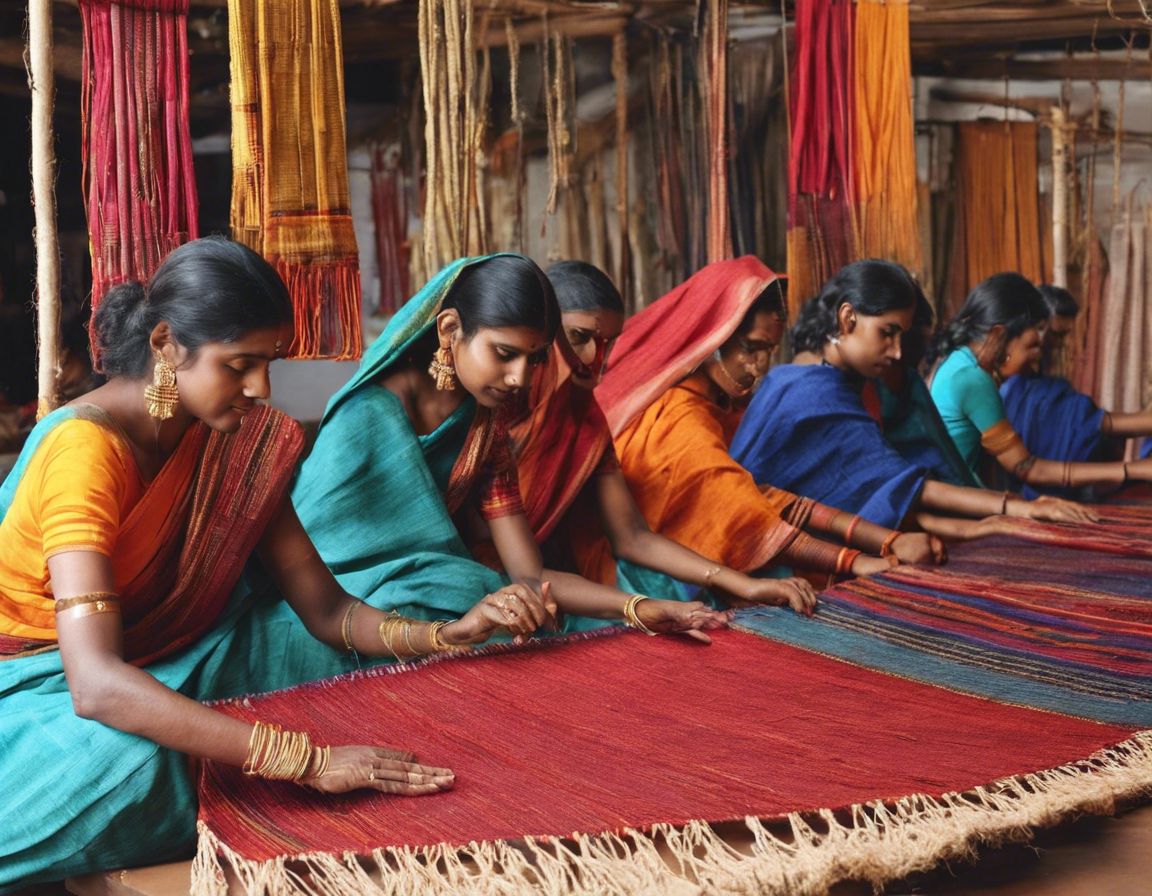A celebration of culture and tradition, National Handloom Day is observed on August 7th annually in India. This day pays tribute to the rich heritage of handloom weavers and showcases their exquisite craftsmanship. The significance of this day lies in recognizing the contribution of handloom weavers to the socio-economic development of the country, as well as preserving the traditional art of handloom weaving.
History of National Handloom Day
National Handloom Day was first inaugurated on August 7, 2015, by Prime Minister Narendra Modi to commemorate the Swadeshi Movement launched in 1905. The Swadeshi Movement aimed to revive the domestic textile industry and promote the use of handloom fabrics. By recognizing this day, the government aimed to create awareness about the handloom industry and encourage people to support handloom weavers.
Importance of Handloom Industry
The handloom industry plays a pivotal role in the economic development of India. It is the second-largest employment generator in the country after agriculture, providing livelihood to millions of weavers, artisans, and allied workers. Handloom weaving is a traditional skill that has been passed down through generations, reflecting the cultural diversity of India.
Promoting Sustainable Fashion
In recent years, there has been a growing global trend towards sustainable and eco-friendly fashion. Handloom fabrics align perfectly with this trend as they are made using natural fibers and organic dyes, reducing the carbon footprint of the textile industry. By choosing handloom products, consumers contribute to the preservation of traditional craftsmanship and support sustainable practices in the fashion industry.
Revival of Handloom Tradition
National Handloom Day serves as a platform to highlight the beauty and versatility of handloom fabrics. Designers and fashion houses are increasingly incorporating handloom textiles into their collections, giving a modern twist to traditional weaves. This collaboration between weavers and designers not only promotes handloom products but also ensures the preservation of this age-old craft for future generations.
Government Initiatives to Support Handloom Weavers
The Indian government has launched several initiatives to support handloom weavers and promote handloom products. Schemes such as the National Handloom Development Program (NHDP), Handloom Weavers’ Comprehensive Welfare Scheme, and Handloom Marketing Assistance aim to provide financial assistance, skill development, and marketing opportunities to handloom weavers.
Ways to Support Handloom Weavers
As consumers, there are several ways we can support handloom weavers and contribute to the growth of the handloom industry:
- Buy Handloom Products: Purchase handloom sarees, garments, and home textiles directly from weavers or certified handloom societies.
- Spread Awareness: Educate others about the beauty and significance of handloom fabrics to promote their use.
- Attend Handloom Exhibitions: Visit handloom exhibitions and craft fairs to discover and purchase handloom products.
- Collaborate with Weavers: Work directly with weavers to create custom-designed handloom products.
- Support NGOs: Contribute to organizations working to empower and uplift handloom weavers through skill development and marketing support.
Sustainability of Handloom Weaving
Handloom weaving is not only a cultural heritage but also a sustainable livelihood option for many communities. The use of natural fibers, eco-friendly dyes, and traditional techniques makes handloom weaving an environmentally friendly practice. By supporting handloom weavers, we not only promote sustainable fashion but also contribute to the preservation of indigenous crafts.
Frequently Asked Questions (FAQs) about National Handloom Day:
-
What is the significance of National Handloom Day?
National Handloom Day celebrates the craftsmanship of handloom weavers, promotes traditional weaving practices, and raises awareness about the handloom industry’s importance in India. -
How can I support handloom weavers on National Handloom Day?
You can support handloom weavers by purchasing handloom products, spreading awareness about handloom fabrics, attending handloom exhibitions, collaborating with weavers, and supporting organizations working for weavers’ welfare. -
Why is handloom weaving considered sustainable?
Handloom weaving is considered sustainable because it uses natural fibers, organic dyes, and traditional, energy-efficient techniques, reducing the environmental impact of textile production. -
What government schemes support handloom weavers in India?
The Indian government has launched schemes such as the National Handloom Development Program (NHDP), Handloom Weavers’ Comprehensive Welfare Scheme, and Handloom Marketing Assistance to support handloom weavers. -
How can designers collaborate with handloom weavers?
Designers can collaborate with handloom weavers by incorporating handloom textiles into their collections, working directly with weavers to create unique designs, and promoting handloom products through fashion shows and exhibitions.
National Handloom Day is a time to celebrate the rich cultural heritage of handloom weaving and the skilled artisans who keep this tradition alive. By supporting handloom weavers and choosing handloom products, we contribute to sustainable fashion practices and help preserve India’s rich weaving legacy for generations to come.
